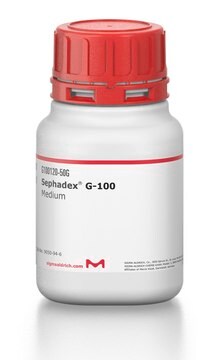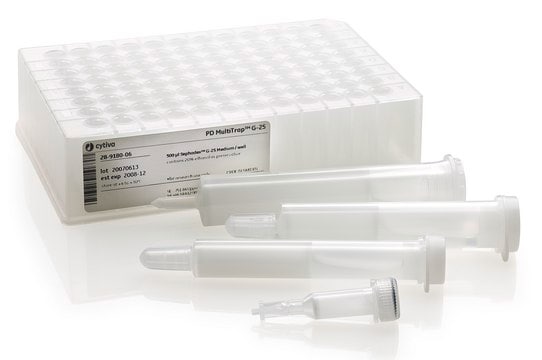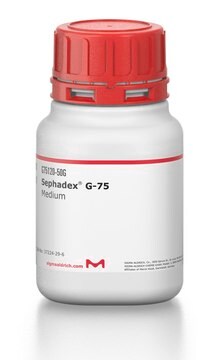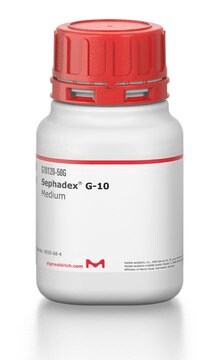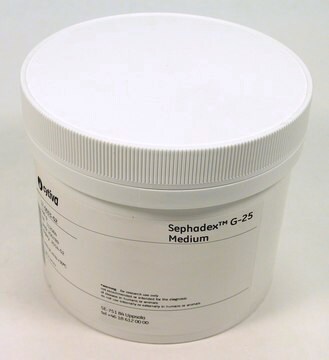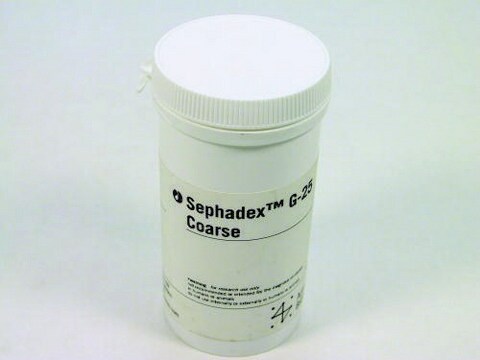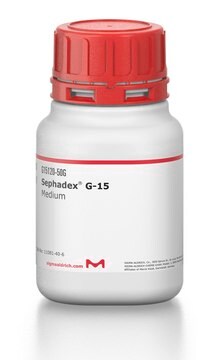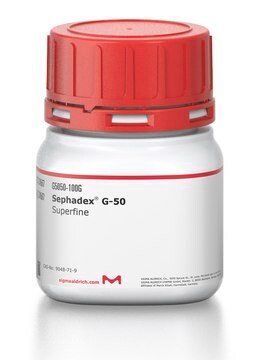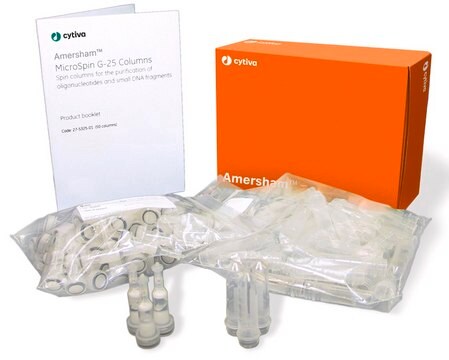S5772
Sephadex® G-25
DNA grade, BioReagent, for molecular biology, Superfine
About This Item
Recommended Products
grade
for molecular biology
product line
BioReagent
form
beads
technique(s)
buffer exchange: suitable
matrix active group
phase
bead diameter
20-50 μm
pore size
exclusion limit (10 bp dsDNA; (rA)10)
pH range
2-13
application(s)
life science and biopharma
compatibility
Cytiva
foreign activity
DNase, RNase, none detected
storage temp.
room temp
SMILES string
O1[C@H]([C@@H]([C@@H]([C@@H]([C@H]1CO)O)O)O)O.OC(CO)CO
InChI
1S/C6H12O6.C3H8O3/c7-1-2-3(8)4(9)5(10)6(11)12-2;4-1-3(6)2-5/h2-11H,1H2;3-6H,1-2H2/t2-,3-,4-,5-,6-;/m1./s1
InChI key
BCPVZFFJGCURNR-OCOFDJSDSA-N
Looking for similar products? Visit Product Comparison Guide
Related Categories
General description
Application
Features and Benefits
- Excellent recovery
- Minimal sample dilution
- Quick and easy to use
Legal Information
related product
Storage Class Code
11 - Combustible Solids
WGK
WGK 3
Flash Point(F)
Not applicable
Flash Point(C)
Not applicable
Personal Protective Equipment
Choose from one of the most recent versions:
Already Own This Product?
Find documentation for the products that you have recently purchased in the Document Library.
Customers Also Viewed
Our team of scientists has experience in all areas of research including Life Science, Material Science, Chemical Synthesis, Chromatography, Analytical and many others.
Contact Technical Service



